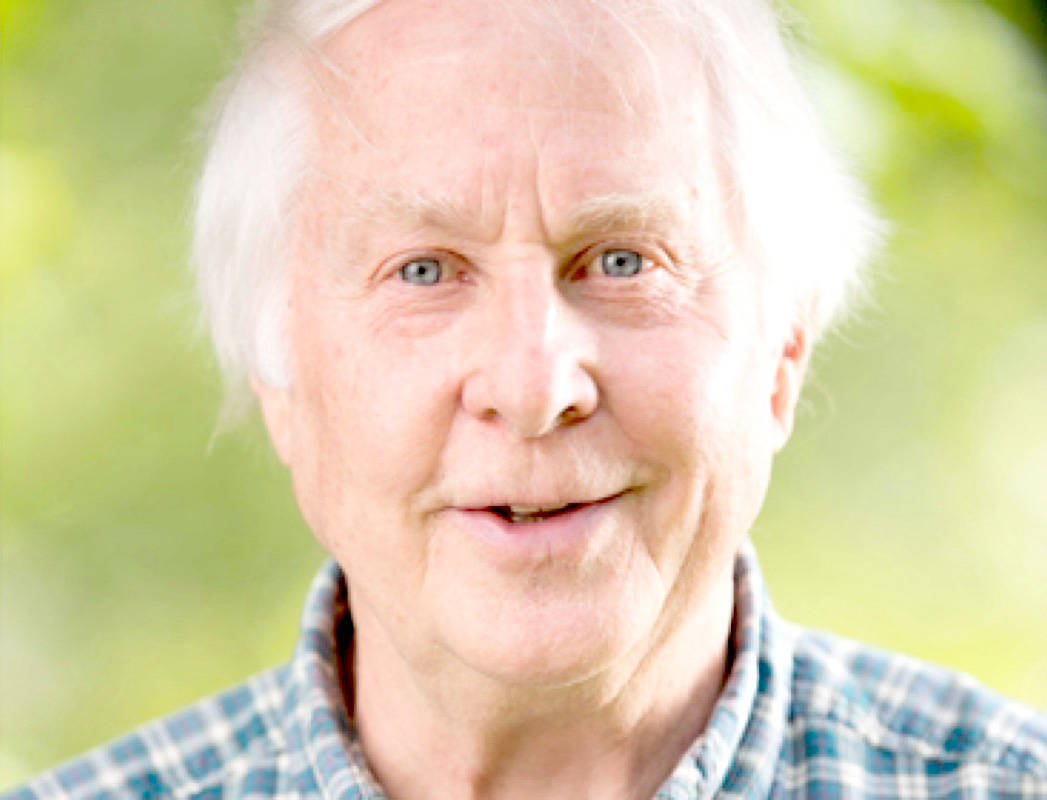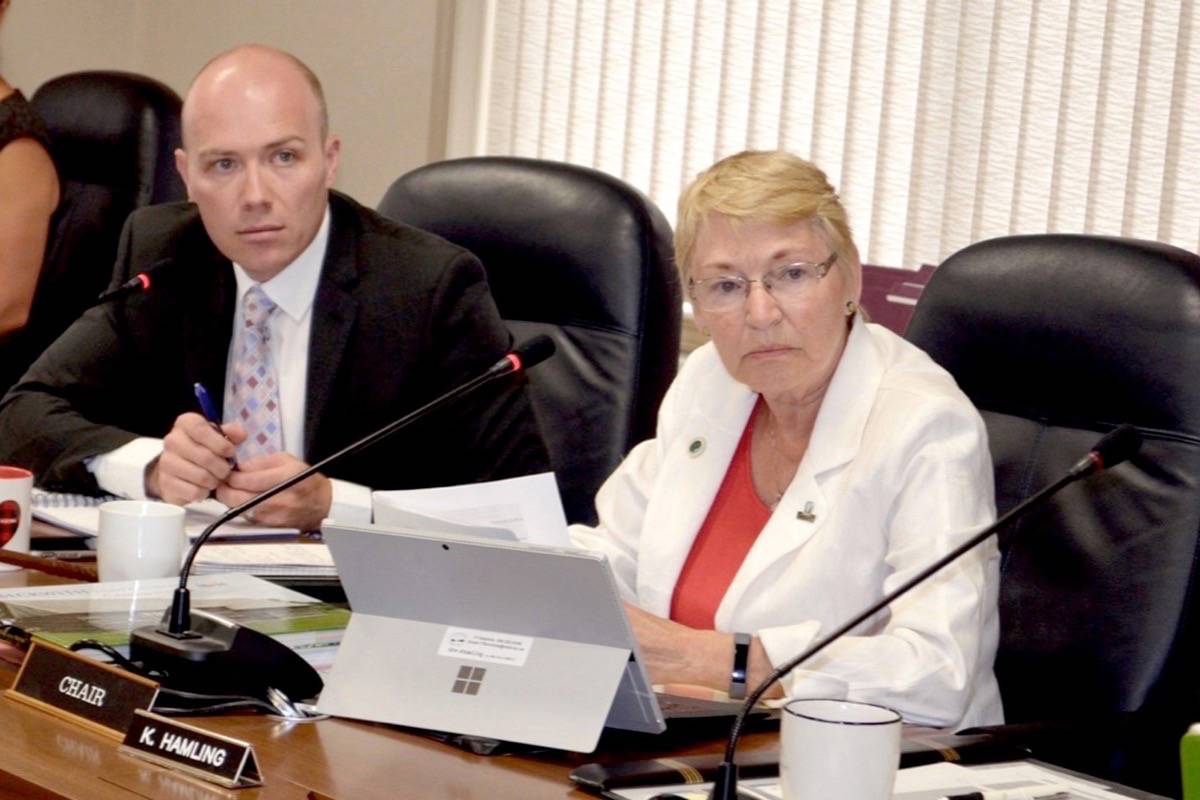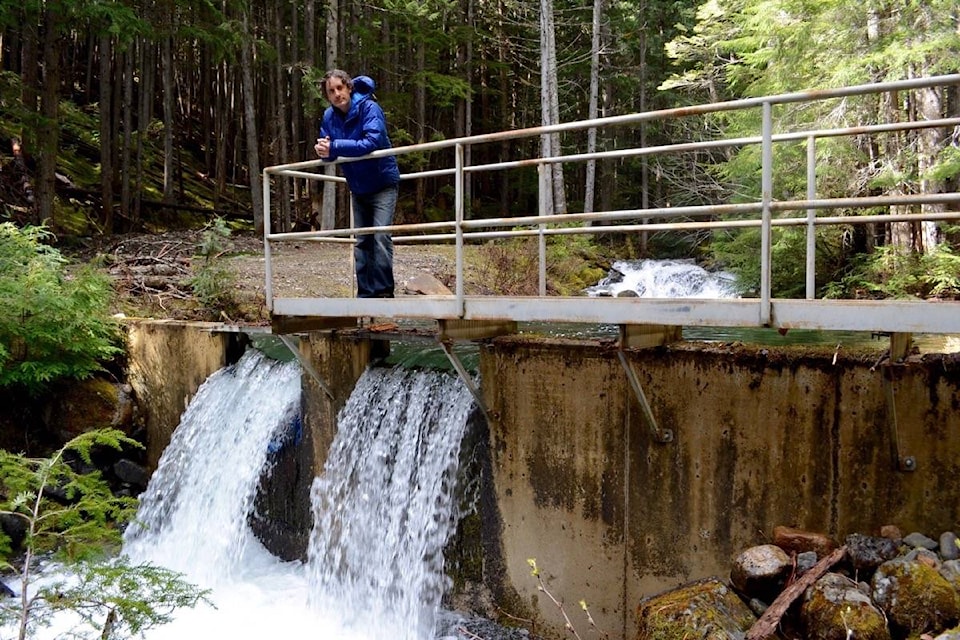Logging companies aren’t doing enough to reassure communities about their work in Kootenay watersheds, and in many cases aren’t doing proper due diligence according to Regional District of Central Kootenay (RDCK) chair Karen Hamling.
Most recently controversies have erupted over planned watershed harvesting in both Ymir and Glade, but there are many other communities grappling with the same issue — several RDCK directors have approached her to see what can be done.
This is a topic she’s heard about again and again.
“There’s been a lot of discussion around the fact that communication isn’t always there between the groups that are going to log and the communities affected,” Hamling told the Star last week, following the RDCK’s monthly meeting.
“Of course the communities are often scared they’re going to lose their water source or it’s going to be contaminated, so there needs to be better communication to reassure them that won’t happen. The companies need to get out there ahead of time, and let the communities know what’s going on.”
RDCK taking watershed issue to municipal conference
Hamling doesn’t plan to sit on her hands when it comes to her communities’ watersheds — she’s taking her directors’ concerns right to the provincial government during the upcoming Union of British Columbia Municipalities (UBCM) meeting in September, which will put her in contact with B.C. cabinet ministers and other representatives of the provincial government.
“Moving forward we’re going to be having meetings with Forestry and the Ministry of Health. We’re going to talk to all the government ministries ahead of time, the CAO (Stuart Horn) and I, then when we meet with them we’ll have the directors who wish to be there with us.”
She thinks it’s possible that these logging companies could put people’s fears to rest.
“You’re always going to have people who don’t want logging at all, but the biggest fear of people is losing their water supply so that’s a pretty big reassurance the logging companies have to supply, that that won’t happen. It will take a lot of work.”
One other thing to factor in: logging companies are running out of places to log that aren’t in watersheds.
“That’s what I’ve been hearing, is that there’s pretty much nothing left anymore except in watersheds. We have to remember that many people and businesses rely on logging for their livelihood, so we want to support logging but we want it done in a responsible way.”
‘This has been done for over 100 years’
Former Nelson Mayor John Dooley sat on the RDCK board for nine years, and he knows exactly what communities like Glade and Ymir are going through — Kalesnikoff created two cutblocks within sight of the Rosemont golf course while he was in power.
“In that particular case there were concerns about the cutblock being above a creek leading to our water source, and at that time we were in the initial stages of interface fire protection.
“Our fire chief Simon Grypma told us these cutblocks were actually an asset to the community because they could act as fire breaks,” he told the Star.
During that particular community consultation period, Dooley felt Kalesnikoff did all their due diligence and were respectful in their approach. And now that he’s the community liaison for the Interior Lumber Manufacturers Association (ILMA), he routinely speaks on behalf of the industry.
According to Dooley, there are a number of steps companies go through before going ahead with their plans — and they take communities’ feedback into account.
“They don’t just waltz in and start cutting for the heck of it. But you’re always dealing with emotion, people get caught up in the idea of losing their watershed. The reality is that nobody wants that.”
Dooley said the foresters involved are local people, working for locally owned companies, and they care about their environment just as much as everyone else.
“The reality is you have to protect the water source, but that doesn’t mean you can’t harvest timber. You can do both, and this has been done over 100 years.”
‘For every tree harvested, three are planted’
Watershed harvesting is a profoundly emotional topic for Ken Kalesnikoff, who is both the president of Kalesnikoff Lumber and the chair of the Interior Lumber Manufacturers Association (ILMA).
Since 89 per cent of his company’s logging is done in watersheds, this issue has huge implications for his business and his family.
“We understand the concerns and apprehension people feel, and we take our responsibility very seriously,” he told the Star.
“The amount of work we do before we even get there, when anyone in ILMA decides to log anywhere, it triggers so many things the guys have to go through — it’s not unheard of to go two or three years to get to a cutting permit. A lot of care, effort and energy goes into the process before any harvesting is even done.”
Once they’re finished, they end up replanting — according to Kalesnikoff, for every tree harvested, three are planted, which he says is an industry standard.
“This may be industry’s fault for not educating people, but we have been putting a lot of effort into communicating with communities and we even encourage them to create watershed societies.”
The problem is many communities are antagonistic from the start, and in the case of Glade he felt frustrated to find residents refused to engage in a dialogue because they didn’t want any logging at all.
That puts loggers in a tough spot.
“They’ll say to us ‘all you want is to make money’ and that is so far from the truth. As a company we are trying to be as innovative as we can, and we want to create an environment where people understand that we’re farmers of the land.”
Kalesnikoff himself represents the third generation of his family to work at his company, and he has children and grandchildren he hopes will become part of the company’s infrastructure.
“Our sign says ‘take care of the land, and the land will take care of you.’ And that is so, so, so important to us.”
‘Everyone was spanked and told they have to do better’
It doesn’t surprise B.C. Timber Sales’ Russ Laroche that the RDCK has issues with the communication around watershed harvesting — he attended a meeting on the topic at UBCM in 2016, and has already RSVPed for the follow up.
“This is high on the radar of all the forest companies,” Laroche, the timber sales manager for the Kootenay business area, told the Star.
“This isn’t just about watersheds, but also communication with local governments and stakeholders in general … At UBCM this discussion was cracked open, everyone was spanked and told they have to do better, and that’s produced a number of good things.”
Communication with controversial watersheds, such as the one in Ymir, has been tumultuous but worthwhile according to Laroche. And he believes they’re making progress.
“You build some momentum, you build relationships and you build some trust. Now with Ymir we’ve got a good group of people we’re working with, we’re providing a lot of answers, and that’s the hardest thing to do — what foresters are worst at is communicating what the business is, what it entails and how decisions are made.”
He noted that in the Arrow Timber Supply Area, one of two in the RDCK, there are 34 community watersheds and 428 domestic license watersheds. In total, 46 per cent of their harvestable timber is in watersheds — making these conflicts somewhat inevitable.
“The vast majority of those watersheds have been logged over the last 10 years,” he said.
“If you go out (to one of the logged watersheds) you’ll see a functioning watershed, and you’ll usually see a relationship that’s been built between the community and the loggers in which we share information and communicate regularly.”
Alhough communication can be tough, he believes their work at times can speak for itself.
“I don’t want to discount anybody’s concerns, but what I can say is that the concerns post-harvesting are fewer than prior to harvesting. Every time we go into a watershed there are concerns, but we don’t hear many after the fact.”
‘More people are saying this doesn’t add up’
Forest ecologist Herb Hammond has been entangled in the issue of watershed logging for decades now, and he’s most recently signed on to work for the Glade Watershed Protection Society.
According to him, there’s an underlying assumption made by logging companies and politicians that citizens’ fears of having their water source disrupted are unfounded, and if only the companies would communicate better then the societies protesting watershed harvesting would be satisfied.
That’s not true, according to Hammond.
“They’re assuming they can perpetrate an unnatural disturbance over and over again on a natural habitat and it won’t have an impact. That flies in the face of science and common sense.”
He noted that even if three seedlings are planted to replace a fully grown tree, that’s still a devastating loss for the surrounding ecosystem.
“The simplest way to say it is you can plant a tree, but you can’t plant a forest,” he said.
“Foresters need to change the definition of forestry so it’s about the forest, not tree plantations. Only then will they get the support of an informed public … More and more people are saying this doesn’t add up and I think the logging companies are underestimating the public in that regard.”
Since the introduction of the Forest and Range Practices Act, he said, companies operating on public land are now only obliged to submit for public and government review something called a Forest Stewardship Plan (FSP), a document that relies on the applicants’ professional credentials but doesn’t require much information according to Hammond.
“It’s got a benign name, but it’s not a plan — it’s a checklist,” he said.
The end result of this practice, according to Hammond, is that “no government standards have enough detail in them to hold them accountable.”
In other words, he’s not surprised to hear Hamling criticize logging companies’ communication strategies.
“It’s even more Orwellian than that. It’s not just bad communication, they actually don’t have to communicate — that’s the sad part.”
Watershed protection societies spring up
The Ymir Watershed Protection Society is only the latest in a long line of Kootenay organizations that have vowed to oppose logging in community watersheds, and they most recently held a meeting on July 13 in which they outlined their plans to meet with both BC Timber Sales and the Ministry of Forest, Lands and Natural Resource Operations (FLNRO).
“We are actively seeking granting to help fund an independent hydrology report,” Ymir resident Carla Stephenson told the Star, noting the goal is approximately $7,500 with matching funds coming from the RDCK.
The organization plans to have a presence at the Kaslo Jazz Etc Festival, where they will collect signatures at a booth and encourage residents to bombard the government agencies with faxes, emails and letters.
“We’re trying to saturate their lines,” she said.
Ymir has received backing from the RDCK, and Area G director Hans Cunningham has taken up their cause. He’s only one of a number of directors, including Ramona Faust and Andy Davidoff, who have funnelled their communities’ concerns up the chain to Hamling.
But no matter how mobilized or vocal a community is, they’re quite often met with non-substantive replies according to Hammond.
“I’ve been writing them specific questions about watershed management, and they send me these general pieces of paper that don’t answer my questions at all. It’s the classic fox guarding the hen house situation.”
Building forestry sustainability
Hammond believes it’s time that local governments and logging companies look at new forestry management practices, and his company Silva Ecosystem Consultants recently designed the award-winning Harrop-Procter Community Forest that could be used as an example.
That forest has been certified by the Forest Stewardship Council (FSC), an international organization that aims to implement responsible forest practices around the world.
“The FSC not only has a strong focus on actual forest practices, but also requires adherence to strong social, aboriginal, and environmental principles. The FSC is the only certifier that is supported by a broad range of environmental groups,” reads the Harrop-Procter Community Forest website.
According to Hamm-ond, responsible logging means staying out of watersheds and ending the practice of clearcutting. Doing that will go a long way towards not only creating environmental sustainability, but helping them address the ongoing effects of climate disruption — including the raging wildfires out west.
“We have to recognize as a society that forestry is not a science, it’s an industrial construct that aims for the rapid conversion of trees to dollars. Science tells us we should be conserving our intact forests, and we if we want to do something we should be doing climate change restoration, thinning the forests and leaving the big trees.”
“If we’re serious about protecting our water, not only would we get out of watersheds but we could create resilience with our local forests and the only responsible way to do that is through local control.”
He noted both Vancouver and Victoria used to log their watersheds, but that practice was ended. He believes it’s long overdue that Kootenay residents demand the same move be made here.
“Clearcuts and tree plantations are not about water conservation, they’re about water degradation.”


